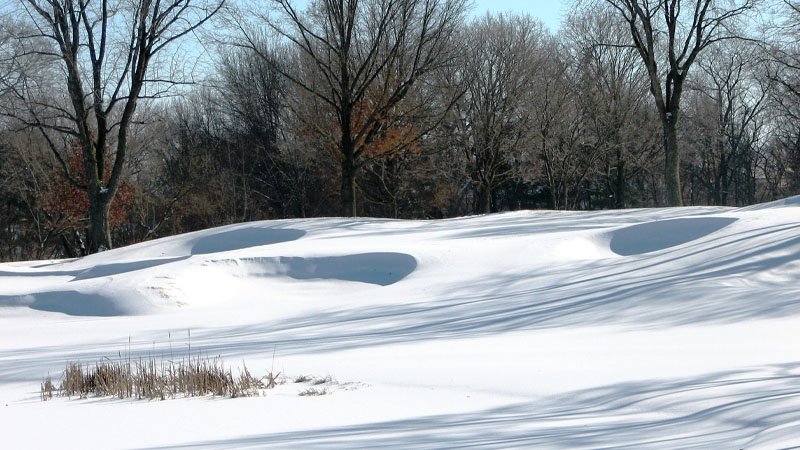
A study under way at multiple Midwestern universities will one day provide turfgrass managers with a tool that can help them identify the threat of winterkill and give them time to take action before damage sets in. At least that is what scientists are hoping for.
Researchers at Michigan State and the University of Minnesota are using subsurface sensors planted at several golf courses in both states to measure soil moisture and temperature at three depths as well as oxygen and carbon dioxide levels just below the surface to learn how that data might one day help predict the threat of winterkill. Data measured by the sensors is transmitted to the user through a cellular connection.
The sensors, which were developed at the University of Minnesota were installed at 10 courses in that state, six in Michigan and one in Norway, said Kevin Frank, Ph.D., of Michigan State.
"The hope is that we can develop a model that will tell people in real time that they might have an issue," Frank said. 'We believe it is anoxia underneath ice cover that causes winterkill. It might be soil moisture and temperature and a combination with freeze-and-thaw cycles."
I know this is going to sound awful, but placing them in different locations gives us a better opportunity to see some death.
The study is part of a larger multi-university research project under the U.S. Department of Agriculture Specialty Crop Research Initiative, but in two previous tries it has yet to be approved by the USDA for funding. The cost of the sensors, at least those in the ground on golf courses in Michigan, was funded by the Michigan Turfgrass Foundation.
"Hopefully, the third time is the charm," Frank said. "Our challenge has always been winterkill is unpredictable. Seven years ago, there was mass turf death in this area. It might be another seven years before we see anything like that again. It might be 20 years, or we might never have that kind of death again."
Placing the sensors in different locations that include Detroit, Grand Rapids, Gaylord and Petoskey areas in Michigan, increase the chances of encountering some adverse conditions.
"I know this is going to sound awful, but placing them in different locations gives us a better opportunity to see some death," Frank said. "Hopefully, we'll be able to pinpoint data on gasses, or temperature or moisture levels. It will be helpful to show that the research is working before getting funding."
The sensors were installed last autumn. The research is still in its early stages.
"The first year, we're just trying to find if they work and do they give a continuous data stream," Frank said. "Half were working here, the others are a mystery until I get them in my hands and see if they recorded data.
"After several years of doing this, we want to find if there are there specific thresholds of temperatures, gasses, moisture, and in real time can it tell superintendents that they have an issue and there might be something they can do about it. That is the goal."


